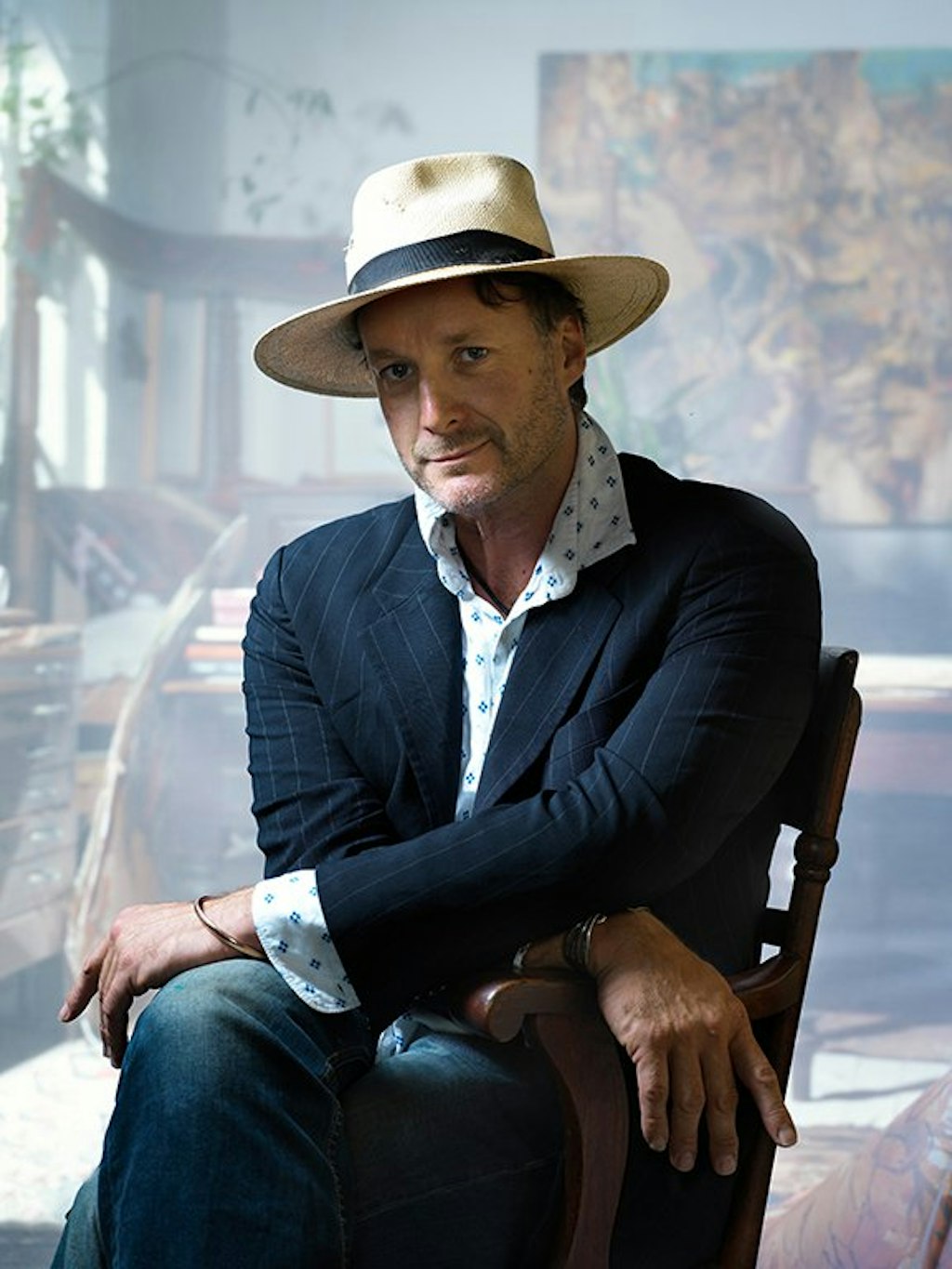The art that made me: Luke Sciberras
In The art that made me, artists discuss works in the Art Gallery of New South Wales collection that either inspire, influence or simply delight them.

Luke Sciberras in his studio, photo: Gary Grealy
Luke Sciberras in his studio, photo: Gary Grealy
Often working en plein air, Hill End artist Luke Sciberras seeks to capture the essence of place through his landscape paintings and drawings.
‘There has to be time spent in places and usually repeat visits over varying seasons to truly be able to wrest an image that is about a place rather than just of it,’ he reflected after a trip to Wilcannia in New South Wales.
A number of his works capturing the landscape and creatures of Wilcannia and the Kimberley, in Western Australia, have recently been acquired for the Art Gallery of New South Wales collection. These works on paper have a luminous intensity, evoking the colour, light and distinctive scenery of each area. Incorporating soil and river mud from his surroundings as he worked, Sciberras embedded the heat, dirt and feeling of each place into these works.
This expressive sense of place runs through the collection works that have shaped him as an artist.
Elisabeth Cummings Arkaroola landscape 2004

Elisabeth Cummings Arkaroola landscape 2004, Art Gallery of New South Wales © Elisabeth Cummings / Copyright Agency
Elisabeth Cummings Arkaroola landscape 2004, Art Gallery of New South Wales © Elisabeth Cummings / Copyright Agency
One of the great ironies to me is that one of the most impressive paintings in the Gallery’s collection was rejected from the Wynne Prize only the year before it was purchased. Thankfully, in their wisdom, the SH Ervin Gallery selected it in the Salon de Refusés where it was spotted by a canny curator who ensured it found its place at the Gallery. Cummings’ work holds for me an enduring enchantment. As a young teenager she gave me formative drawing lessons before I was brave enough to attend the National Art School and, ever since, Elisabeth and I have painted and travelled together all over Australia and many countries overseas, so I must salute her as an influence (if she doesn’t mind). Her use of paint here is lavish and luscious and forms a crust, much like the rocky crust of the Flinders Ranges, and at once she captured some of its delicacy, calligraphy and shimmer. There is among its layers an observation that is embedded and fleeting, with structure and veil. Cummings’ work is realised, knowing and learning all at once.
Charles Conder The hot sands, Mustapha, Algiers 1891

Charles Conder The hot sands, Mustapha, Algiers 1891, Art Gallery of New South Wales
Charles Conder The hot sands, Mustapha, Algiers 1891, Art Gallery of New South Wales
This exquisite painting captivated me as a very young man and held my gaze on every visit. Its restrained palette of light pastel struck me as being incredibly mature beyond Conder’s 23 years and made me crazy with envious rage. But mostly I was touched by the delicacy and strangeness of the arrangement in the foreground and the mysterious figure at leisure in the distance.
As the petals fall, wilted by heat, a moment is seized, felt and painted with what must have been the immediacy of a sketch, but it is a magnificently well-resolved work which still glows for me.
Lin Onus Fruit bats 1991

Lin Onus Fruit bats 1991, Art Gallery of New South Wales © Estate of Lin Onus / Copyright Agency
Lin Onus Fruit bats 1991, Art Gallery of New South Wales © Estate of Lin Onus / Copyright Agency
I can recall being enthralled and at once puzzled by Fruit bats as the layers of implied meaning took shape in my imagination. As a regular visitor to the permanent collection of barks, totems and weavings, which I used to find almost hidden downstairs, I came across this arresting work with something of a wry smile. But it made me stop, think and invert the entire way I thought of Aboriginal art – the here and there, the then and the now, all folded into a seamlessly knitted vernacular all its own.
I now have a collection of beautiful paintings by First Nations artists both vintage and contemporary and I often think of how, to me, Onus shredded so many expectations and limitations that had hitherto been applied to so many artists. There are surely a great number of urban artists with a sensibility such as his, with a touch and consideration like his, who would salute Onus for his wit and wisdom, as I do.
John Russell Les Aiguilles, Belle Île 1910

John Russell Les Aiguilles, Belle Île 1910, Art Gallery of New South Wales
John Russell Les Aiguilles, Belle Île 1910, Art Gallery of New South Wales
When I was about 15, a very kind staff member of the Gallery agreed to show me to the storage racks where their collection of John Peter Russells was held. I hadn’t seen them in the flesh before, only the oils upstairs in the hallowed old rooms with creaking parquetry floors. But lo, on these charmless aluminium grills were the opalescent works by, in my view, a world-class artist, who to me remained undiscovered. I was, and remain, delighted by the sense of revelation I felt at seeing these salt-encrusted notes by an Australian impressionist who worked easel to easel with Van Gogh, Monet, Matisse, Roberts, Rodin etc. Russell’s work holds a rare power and a liberation that even his northern-hemisphere colleagues rated as equal, if not superior, to theirs. Having subsequently been to Belle Île with the Gallery in search of his legacy, I’ve seen firsthand the terrain and elements he fell so deeply in love with, so far from home. For him and for me in differing ways, it was a dream come true.
A version of this article first appeared in Look – the Gallery’s members magazine